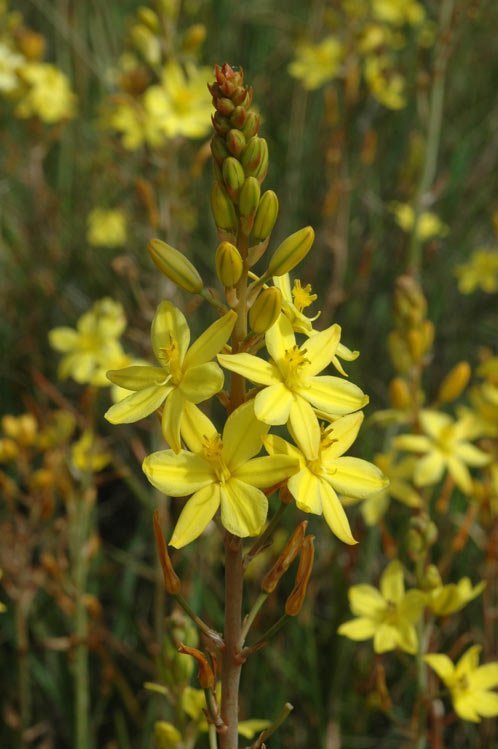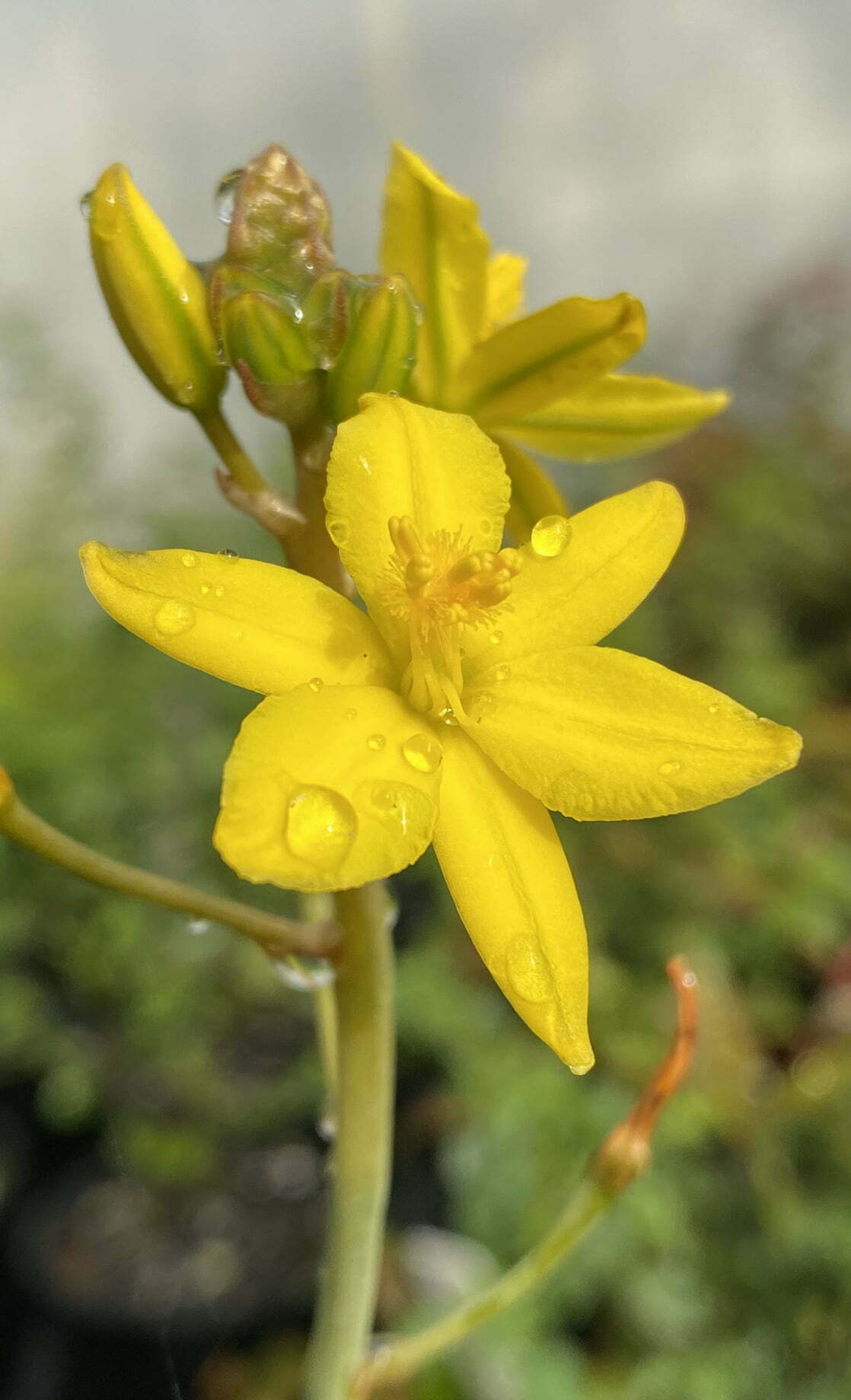
Bulbine bulbosa
Common name: Native leek, Bulbine Lily, Wild Onion, Golden Lily
- I grow best: Full sun/ Part shade
- Height up 75cms
- Soils moist near the swamps grow more prolific
- Flowers – September to March
- Attracts – butterflies & insects
- Edible corm (underground stem)
- Eastern Suburb Banksia Scrub
Looks like: B. bulbosa is a densely tufted perennial herb reaching 75cm. In the wild, plants are found growing in conspicuous colonies. The green – grey leaves are succulent and channeled growing to 40cm. The bright yellow star-like flowers are approximately 2cm wide and are borne on simple racemes of up to 50 flowers. Each flower lasts for just one day, with one to several opening at a time. The stamens bear prominent tufts of hair. Flowering occurs from September to March with some geographic variation, although cultivated plants tend to have longer flowering periods. Despite its name, B. bulbosa does not have bulbs. Instead, a subterranean stem called a corm is present, from which the aerial stems, leaves and flowers are produced and in which food reserves are stored. Short fleshy roots also protrude from the corm.
Habitat & Growing : The distribution of B. bulbosa extends through temperate Australia from central Queensland to Tasmania and South Australia. It grows in a variety of habitats including red gum woodland and dry sclerophyll forests and is common in grasslands and rock crevices. Occasionally B. bulbosa will grow in alpine grasslands and has been recorded to 1800m on the Bogong High Plains. Often it is associated with water retentive soils or soils which are seasonally inundated, such as near swamps. An attractive species with fragrant flowers. It is especially suited to rockeries and cottage gardens and is also excellent as a container plant. Like in the wild, it can look stunning grown in clusters and is a great native alternative to the foreign daffodil. B. bulbosa has actually been grown in the northern hemisphere for many years and is sadly under appreciated in Australia. It will grow in full or part sun and tolerates a variety of soils provided reasonable drainage is available. It is also frost hardy making it suitable for regions with cooler climates. B. bulbosa is best maintained with regular watering throughout the year. During dry weather plants can die back to the rootstock, however with frequent watering new growth can continually be produced. Gardeners in regional areas should be aware that this species may be poisonous to stock if consumed in large quantities.
Two methods may be used to carry out propagation – seed or division. B. bulbosa propagates easily from seed. Seeds are released when the fruit capsule opens. The easiest way to tell if the seeds are ripe is when the colour changes from cream to grey – brown. In Melbourne ideal collection time is from late November to early December, although this may vary with exact location. After collection, seeds should be stored for 2 – 3 months, after which germination will take around 35 days. Propagation by division can be achieved by carefully cutting tubers from the parent plant after the flowering cycle has completed. After division, it is best to store the new individuals in dry conditions using standard potting mix until the following spring after which watering can be increased to encourage new growth.
| Family | Asphodelaceae |
| Plant Type | Clumping perennial, Bulb or bulb-like |
| Width | 0.5 |
| Flowering Time | Spring, Summer, Autumn |
| Soil Type | Loamy, Sandy loam, Clay loam, Potting mix, Poor soil |
| Climate Zone | Well-drained, Moist moderate drainage |
| Soil Moisture | Well-drained, Moist moderate drainage |
| Special Uses | Edible |
| Height | 0.8 |
| Flower Colour | Yellow |
| pH Level | Acid, Neutral, Alkaline |
| Plant Environment | Courtyard, Container growing, Cottage garden, Flower garden, Wildflower meadow |
| Light | Sunny, Light shade |
| Lifespan | Perennial |
| Frost Tolerance | Tolerates light frost |
| Attracts Wildlife | Bees, Butterflies, Other insects |
Distribution:

Traditional uses: Edible bushtucker plant. Apart from being an attractive addition to the garden, B. bulbosa is also useful as a food plant. The plump, round corms were traditionally eaten by Aboriginal people. The corms are best roasted and can be eaten all year round, although it will take a few years initially for the corm to mature. Roots of B. bulbosa are regarded as the sweetest of the lily and lily – like plants. They are also nutritious, containing calcium and iron.

